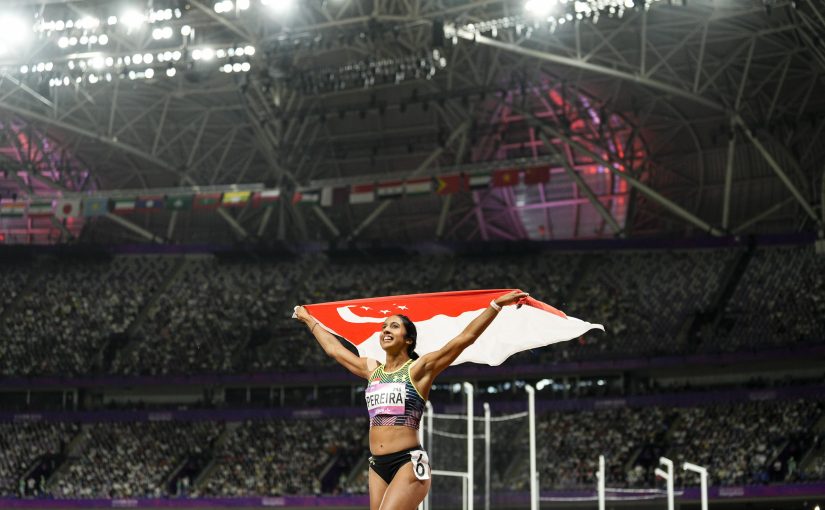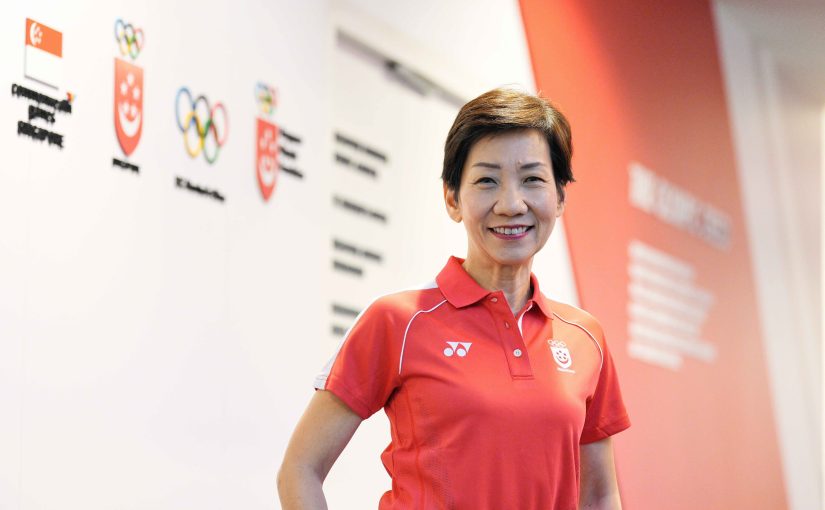Keeping things in check: Meet SNOC’s sporting watchdog

SNOC President Tan Chuan-Jin (in blue) and former STAC Chairman (in red and gold stripes) visit the squash team before the 2015 SEA Games
By Justin Kor
It is 6.30pm on a Tuesday evening. While most are preparing to wind down their day, the work is just getting started for the members of the SNOC’s Special Training Assistance Committee (STAC). As the sun sets, they embark on site visits to the National Sports Associations (NSAs) situated around the Sports Hub. Dinner would have to wait.
The mission of the evening: to check on the progress of the athletes preparing for two upcoming major Games – the 2019 Southeast Asian (SEA) Games and the 2020 Tokyo Olympics.
The first pit stop is the Water Sports Centre down by the Kallang waterfront, where the committee meets canoeists and dragonboaters hoping to be chosen for the SEA Games in the Philippines at the end of the year.
Led by chairman Mr Milan Kwee, the team observe them at training. Out in the waters of the Kallang Basin, the athletes are out to impress, as they compete a practice race that showcase their powerful strokes and exemplary technique. Their boats seem to effortlessly glide through the water.

Following this ‘exhibition’, the committee then gets briefed on the preparation programmes by the coaches, aided by detailed dossiers that the canoeing and dragonboat federations have compiled.
An informal Q&A session then follows. Are the athletes participating in enough tournaments to maintain their competitiveness level before the major Games? What are the issues the association is facing? How do they expect their athletes to do at the Games?
The answers rapidly follow, as the officials and athletes share their plans to participate in regional competitions as a lead up to the SEA Games. They highlight issues that STAC notes down and will look to address, such as National Service commitments and requests for additional funding. In addition, athletes also share their aspirations and targets for the competition ahead – most hope for at least a podium finish in the Philippines, if not at least a personal best.
This is the routine that STAC adopts for every association. Down at the beach volleyball court, they observe players engaging in rallies and meet representatives from the Singapore Volleyball Association. They then wrap up proceedings with the last two sports for the evening – netball and pencak silat – in the multipurpose halls.
Before concluding each session, Kwee makes it a point to ask the associations if they have any questions, emphasising that it is a two-way communication between the two parties. “Ultimately, our goal is to help them. That’s why we want to make sure that everything is made clear to them,” he explains. It is close to 9pm before the committee wraps up.
But the work is far from over. Over the next few weeks, they will visit athletes and officials from over 50 sports around the island. The seven-member committee, made up entirely of volunteers, will visit up to six associations each time. In the lead up to a major Games, there will typically be three rounds of visits and meetings.
STAC was set up in 1990s by then chairman Dr Tan Eng Liang, who led the committee before stepping down last year. It is one of 11 committees in the SNOC, which also includes the Games Selection Committee and Finance Committee.
The best way for SNOC to evaluate the assistance needed for athletes, explains Tan, was to simply see the training sessions for themselves.
“We get to see whether they are serious about training before the selection trials, and ensure that they maintain their standards after being selected,” he says. At times, STAC even conducted random spot checks.
But he adds that the relationship between STAC and the NSAs is meant to be mutually beneficial. “In return, they (the NSAs) can tell us what assistance they need, as it’s also meant to be a feedback session for the athletes,” he says.
Indeed, NSAs have benefitted through STAC’s involvement. For instance, in 2014, 14 associations received nearly S$300,000 in funding from SNOC to provide their athletes with additional support for the 2015 SEA Games. This was only possible after STAC had received feedback from these associations, before evaluating and recommending them to receive the support needed.
In addition, the committee always looks to ensure that the selection is fair. “We want to make sure that everyone gets a chance, and that the best will represent Singapore,” explains Tan.
Through the years, the veteran sports administrator has seen much progress among the NSAs. He recalls when STAC first started, the associations were mostly run by volunteers as they could not afford to hire full-time staff.
But over the years, with financial aid from SNOC and Sport Singapore, these associations have become more professional with full-time workers.
“We’re improving. In the beginning, there were only 2 to 3 NSAs that were good enough. Now there are over 10. But we still have some way to go,” he remarks.






